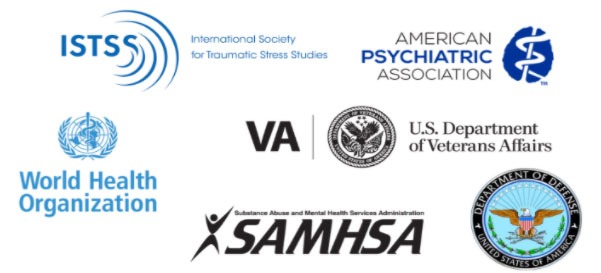EMDR Therapy & PTSD
Can EMDR therapy help with PTSD?
Yes! Learn how you can experience relief with EMDR therapy
How can Eye Movement Desensitization and Reprocessing (EMDR) therapy help you overcome PTSD?
Eye Movement Desensitization and Reprocessing (EMDR) is an eight-phase psychotherapy approach that helps people recover from trauma without having to talk at length about the traumatic experience(s). It is an effective therapy with a lot of research support. An EMDR therapist will help you to tell important aspects of your story and will be mindful of how your culture and personal context impact you. They will build a working relationship with you, and help you develop tools for coping with how you are feeling currently. The therapist will help you identify your internal and external resources and the experiences causing distress (traumas) and their relationship with current symptoms. The therapist will assess your readiness for addressing your trauma and move at a pace that works for you. If a client is not sure what event(s) have caused the PTSD symptoms, an EMDR therapist can help them to identify how their current symptoms are connected to past events and how they can be resolved.
When you are ready to reprocess an event that is causing your PTSD, your therapist will ask you important questions about the event including your thoughts, feelings, body sensations, and images. To start reprocessing, you will think about the event and follow movement with your eyes (or alternatively hold tappers in your hands or listen to tones or do self-tapping on your chest alternating the left and right side (butterfly hugs). The movements are called dual stimuli or bilateral stimulation. During the reprocessing you will notice what happens in your body, thoughts, and feelings without judging them or trying to change them. You just go with what comes up and briefly report changes to your therapist between sets of movements. Notice how it changes during the reprocessing sessions. While at the beginning people rarely believe that how they feel can ever change, EMDR therapy does help people reprocess traumatic events so that they are no longer stored in that raw, vivid, state specific form. After reprocessing, people link the traumatic even with an adaptive positive belief such as “I did the best I could,” or “I am safe now.”
EMDR reprocessing takes a number of sessions and can be done either in person or remotely via telehealth. At the end of each session your therapist will help you to return to a calm place and talk to you about how to “close” down the work until your next session. The number of sessions that someone might need with EMDR therapy depends on many factors such as: if there is only one incident or many incidents of trauma, how long ago the trauma(s) were, and how much support was received after the trauma.
EMDR Therapy is a Recognized Effective Treatment for PTSD

Ask Us A Question
EMDR FAQ
EMDR therapy does not require talking in detail about the distressing issue or
completing homework between sessions. EMDR therapy, rather than focusing on changing the emotions, thoughts, or behaviors resulting from the distressing issue, allows the brain to resume its natural healing process.
EMDR therapy is designed to resolve unprocessed traumatic memories in the brain. For
many clients, EMDR therapy can be completed in fewer sessions than other
psychotherapies.
Our brains have a natural way to recover from traumatic memories and events. This process involves communication between the amygdala (the alarm signal for stressful events), the hippocampus (which assists with learning, including memories about safety and danger), and the prefrontal cortex (which analyzes and controls behavior and emotion). While many times traumatic experiences can be managed and resolved spontaneously, they may not be processed without help.
Stress responses are part of our natural fight, flight, or freeze instincts. When distress from a disturbing event remains, the upsetting images, thoughts, and emotions may create an overwhelming feeling of being back in that moment, or of being “frozen in time.” EMDR therapy helps the brain process these memories, and allows normal healing to resume. The experience is still remembered, but the fight, flight, or freeze response from the original event is resolved.
EMDR therapy helps children and adults of all ages. Therapists use EMDR therapy to address a wide range of challenges:
- Anxiety, panic attacks, and phobias
- Chronic Illness and medical issues
- Depression and bipolar disorders
- Dissociative disorders
- Eating disorders
- Grief and loss
- Pain
- Performance anxiety
- Personality disorders
- Post-Traumatic Stress Disorder (PTSD) and other trauma and stress-related issues
- Sexual assault
- Sleep disturbance
- Substance abuse and addiction
- Violence and abuse
EMDR therapy is a mental health intervention. As such, it should only be offered by properly trained and licensed mental health clinicians. EMDRIA does not condone or support indiscriminate uses of EMDR therapy such as “do-it-yourself” virtual therapy.
In the late 1980s, Francine Shapiro, Ph.D., discovered a connection between eye movement and persistent upsetting memories. With this personal insight, she began a lifelong study and development of Eye Movement Desensitization and Reprocessing (EMDR) therapy.
Over the years, and in the face of initial skepticism, Dr. Shapiro’s work developed from a hypothesis to a formal therapy process. EMDR therapy has been demonstrated to be effective for treating trauma in randomized clinical trials, case studies, and millions of clinical hours treating trauma and trauma-related disorders across the globe. The American Psychiatric Association, the U.S. Department of Veterans Affairs (USVA) and Department of Defense (USDOD), the United Kingdom’s National Institute for Health Care and Excellence (NICE), and the World Health Organization (WHO), multiple global organizations now recognize the effectiveness of EMDR therapy that Dr. Shapiro developed.
Most recently, the public acceptance of EMDR therapy was illustrated when Prince Harry reported that he engaged in EMDR therapy to treat trauma from his childhood. Sandra Bullock also opened up about using EMDR therapy to treat trauma from an at-home break-in.
Dr. Shapiro encouraged the foundation of EMDRIA, which comprises more than 15,000 mental health professionals who use EMDR therapy in their clinical practice to treat many conditions that impact mental health. Dr. Shapiro died in 2019, but her legacy of trauma-informed mental health care lives on in the EMDR therapists, researchers, and patients for whom EMDR therapy heals.

Experiencing EMDR Therapy
After the therapist and client agree that EMDR therapy is a good fit, the client will work through the eight phases of EMDR therapy with their therapist.
Attention will be given to a negative image, belief, emotion, and body sensation related to this event, and then to a positive belief that would indicate the issue was resolved.
EMDR may be used as an adjunctive therapy with a separate therapist, or as a treatment all by itself.
